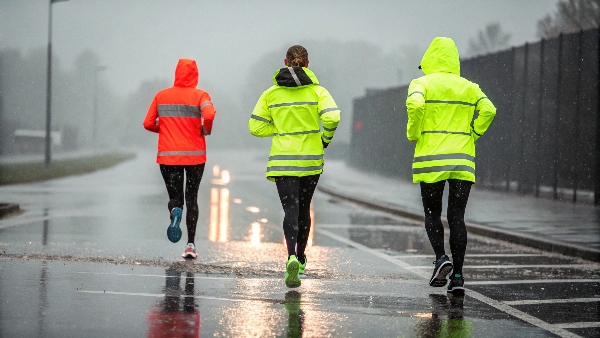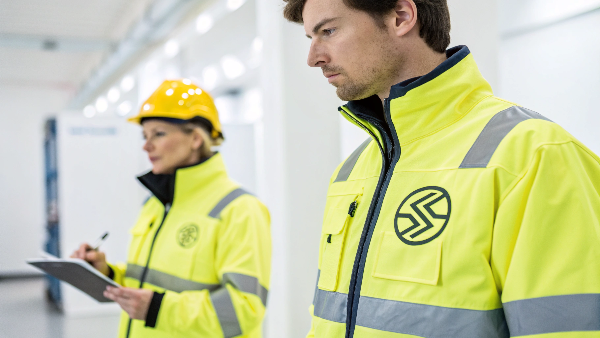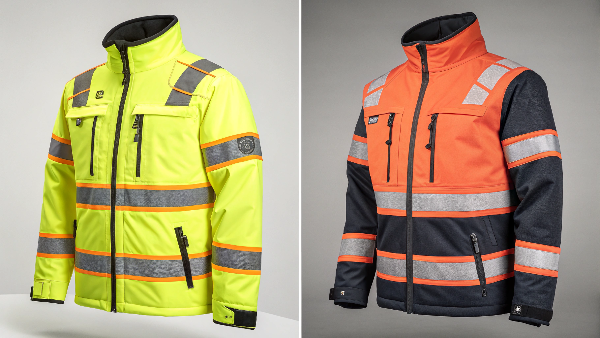Fire is a serious workplace risk. Standard vests can melt or burn. Choosing the right vest protects workers.
High-visibility vests have different flammability ratings. Some are untreated. Others are flame-resistant (FR) or self-extinguishing. They meet specific standards for various job hazards, ensuring worker safety near heat or flames.
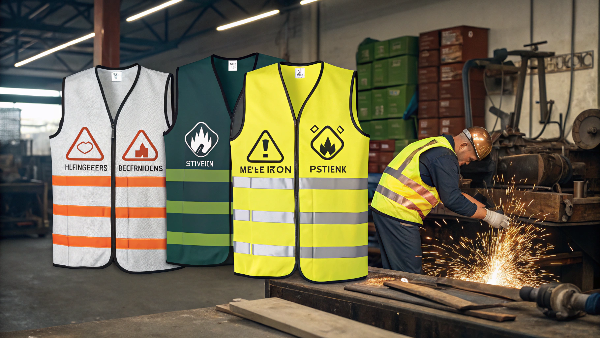
Understanding these ratings is key. It helps select the right vest for the job. We at Vissafety want to ensure everyone knows how to choose gear that truly protects. Let's explore this more. We want to keep you safe and informed about these crucial safety features that we build into our apparel.
What is the flammability rating scale?
Confused by flammability scales? This uncertainty can be dangerous. Understanding scales ensures proper protection is chosen for your teams.
Flammability rating scales classify materials by how easily they ignite and burn. Standards like NFPA 7011 or ASTM D64132 test flame resistance. These help choose vests suitable for specific fire risks3 on site.
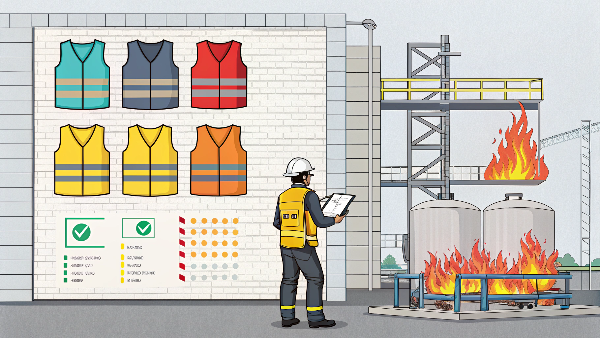
Different standards use various methods to test and classify how materials react to fire. For example, some tests measure how long a material continues to burn after the flame source is removed (afterflame). Others measure how much of the material is charred or damaged (char length). At Vissafety, our R&D lab is equipped with over 75 testing devices. This allows us to verify that our FR vests meet stringent requirements like those in ASTM D6413, which is often used for PPE. It's not just about a single number. It's about understanding what the test means for protection in real-world scenarios. We help our clients, like Danny Cheng who imports PPE to North America, understand these so they can confidently equip their customers.
Here's a simplified look at what some tests focus on:
| Standard Example | Test Focus | Relevance to Vests |
|---|---|---|
| ASTM D6413 | Vertical flame, char length, afterflame | Common for FR PPE, ensures it won't continue burning |
| NFPA 701 | Flame propagation of textiles | Often for draperies, but can apply to textile components |
| EN ISO 14116 | Limited flame spread | For materials and assemblies in protective clothing |
Understanding these helps ensure the selected vest offers the intended protection.
Are safety vests flammable?
Workers near heat need answers. Are their safety vests safe? Not knowing this basic fact puts them directly at risk.
Yes, many standard safety vests are flammable. They are often made from synthetic materials like polyester4. However, flame-resistant (FR) vests5 are available. These are made from treated or inherently FR fabrics for protection.
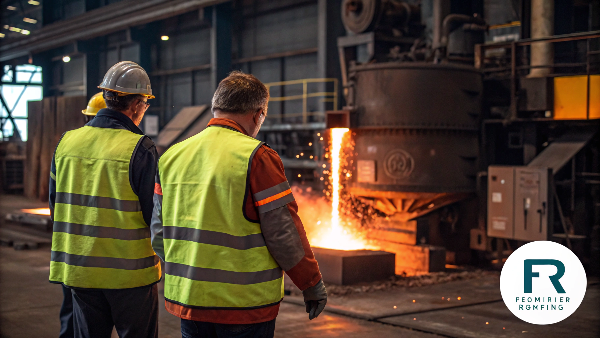
Standard high-visibility vests are typically made from polyester or nylon. These materials are chosen for their durability, light weight, and ability to hold bright, fluorescent colors. However, these synthetic fabrics can melt and drip when exposed to flames or high heat. This can cause severe burns. That's why, for workers in environments with fire or spark hazards, FR vests are essential. At Vissafety, we offer both. We produce standard polyester vests for general visibility needs. We also manufacture FR vests using materials that are either inherently flame-resistant or have been treated to achieve FR properties. I remember a client, Danny Cheng, who sources specialized PPE for the construction and oil & gas sectors in North America. He needed FR vests that also met ANSI Class 3 visibility6. We worked closely with him to select the right FR-treated fabric that provided both flame resistance and high visibility compliance, ensuring his clients' workers were protected from multiple hazards. The choice depends entirely on a thorough risk assessment of the work environment.
What is the CSA standard for high-visibility?
Working in Canada requires compliance. CSA standards can seem complex. Not meeting them means fines or, worse, worker danger.
The CSA Z967 standard specifies requirements for high-visibility safety apparel8 in Canada. It covers design, performance (color, retroreflection), and care labeling. It also references flammability testing where applicable for certain risks.
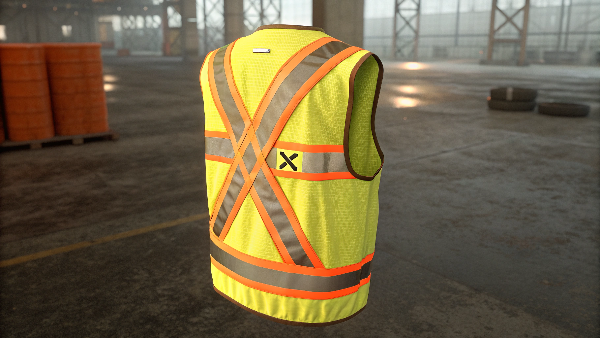
The Canadian Standards Association (CSA) Z96 standard is the key document for high-visibility safety apparel (HVSA) in Canada. It details performance classes based on the amount of high-visibility background material and retroreflective tape. Class 1 offers the lowest body coverage, suitable for workers in less hazardous environments. Class 2 provides full coverage of the upper torso. Class 3 offers the highest visibility, often including material on the arms and legs, for workers in high-risk areas like highway construction. While CSA Z96 primarily focuses on conspicuity, it does acknowledge other hazards. If a risk assessment identifies a flammability hazard, then the HVSA must also meet appropriate flame-resistance standards. At Vissafety, we manufacture garments that can meet various global standards. We ensure our Canadian clients receive vests that are fully compliant with CSA Z96 in the required class, and can incorporate FR properties if their specific job sites demand it.
| CSA Z96 Class | Description | Typical Use Environments |
|---|---|---|
| Class 1 | Lowest body coverage | Low-risk areas, away from traffic, e.g., parking lot workers |
| Class 2 | Full coverage of upper torso (front, back, sides) | Moderate-risk areas, near slower traffic, e.g., road workers |
| Class 3 | Class 2 coverage + material on arms/legs | High-risk areas, high-speed traffic, complex backgrounds |
What is a 5 flammability rating9?
Specific ratings cause confusion. What does a "5 flammability rating" mean? Misunderstanding ratings compromises important safety choices.
A "5 flammability rating" isn't a universally defined term across all safety vest standards. Ratings depend heavily on the specific test method or standard (e.g., NFPA, ASTM). Always check the standard cited.

You might hear numbers used in relation to flammability, but a standalone "5 flammability rating" isn't a common, universal designation for safety vests like ANSI Class 2 or 3 is for visibility. Flammability performance is usually described by specific criteria within a given standard. For instance, ASTM D6413, a common test for flame resistance of textiles used in PPE, measures things like afterflame (how long it burns after ignition source removal), afterglow, and char length. A material must meet specific limits for these to pass. Some specialized industrial or building material tests might use numerical scales, but for safety apparel, it’s more about meeting pass/fail criteria of established FR standards. For example, NFPA 2112 for flash fire protection has detailed requirements. Instead of looking for a generic number, it's critical to identify which standard the vest claims to meet (like ASTM F1506 for arc flash or ISO 11612 for heat and flame) and ensure its performance under that standard is adequate for your workplace hazards. We always advise customers to focus on the specific standard achieved.
| Common FR Test Criteria | What it Measures | Importance for Safety |
|---|---|---|
| Afterflame Time | Duration material burns after flame source removal | Prevents sustained burning on the wearer |
| Char Length | Extent of material damage/disintegration from flame | Indicates material's resistance to breaking open |
| Molten Drip | If material melts and drips when burning | Prevents secondary burns from dripping material |
| Self-Extinguishing | Ability of material to stop burning on its own | Critical for limiting burn injury severity |
What is the ISO standard for flammability?
Global operations need global standards. ISO flammability rules can be hard to track. Non-compliance is a big issue for international companies.
ISO 14116 specifies performance requirements for limited flame spread materials and assemblies. ISO 11612 is for clothing protecting against heat and flame. These ensure vests offer defined protection levels.
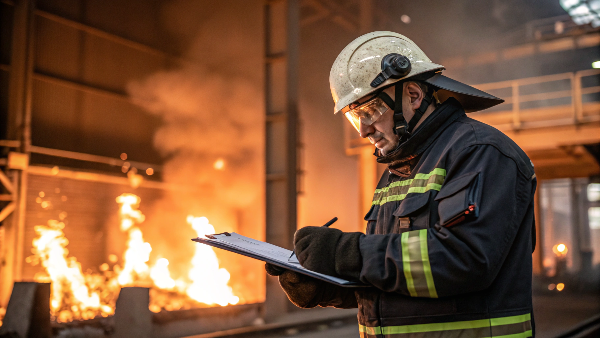
For international markets, ISO standards are very important. When it comes to flammability of protective clothing, two key ISO standards are often cited. ISO 14116, "Protective clothing - Protection against flame - Limited flame spread materials, material assemblies and clothing," defines three index levels based on flame spread properties. Index 1 means no flame spread and no flaming debris, but a hole may form. Index 3 is the highest, offering more protection. Then there's ISO 11612, "Protective clothing - Clothing to protect against heat and flame." This standard is more comprehensive and includes performance requirements against various heat and flame hazards, coded A (limited flame spread), B (convective heat), C (radiant heat), D (molten aluminum splash), E (molten iron splash), and F (contact heat). Vests intended for heat and flame protection would typically need to meet specific levels within these codes. At Vissafety, our commitment to international standards means our R&D team works to ensure products can meet these requirements, helping clients like Danny Cheng who serve diverse industries that may specify ISO compliance.
| ISO 11612 Code | Protection Against | Example Application |
|---|---|---|
| A1 or A2 | Limited Flame Spread | Basic requirement for most FR garments |
| B (1-3) | Convective Heat | Protection from heat rising from a fire |
| C (1-4) | Radiant Heat | Protection from heat emitted by hot surfaces or flames |
| D (1-3) | Molten Aluminium Splash | Foundries working with aluminium |
| E (1-3) | Molten Iron Splash | Foundries, welding operations |
| F (1-3) | Contact Heat | Brief contact with hot surfaces |
Is a high visibility vest a PPE?
Is a hi-vis vest just clothing? Or is it critical safety gear? This distinction matters for workplace safety and employer responsibility.
Yes, a high-visibility vest is Personal Protective Equipment (PPE). Its purpose is to make the wearer more visible in hazardous environments. This reduces the risk of accidents, especially in low light or complex backgrounds.
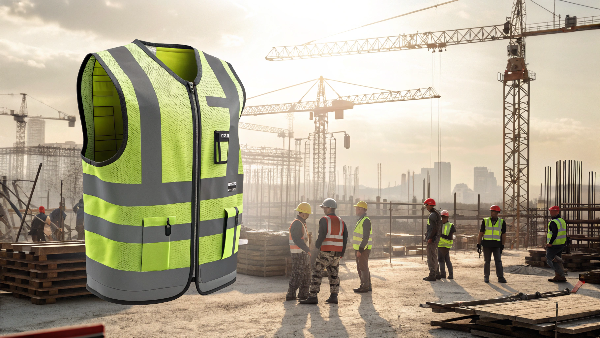
Absolutely, a high-visibility vest is a crucial piece of Personal Protective Equipment. PPE is defined as equipment worn to minimize exposure to hazards that cause serious workplace injuries and illnesses. The primary protective function of a standard hi-vis vest is its conspicuity – its ability to be easily seen by others, especially vehicle operators, in all light conditions and against complex backgrounds. This significantly reduces the risk of "struck-by" accidents, which are a major cause of workplace fatalities. When you add flame-resistant properties to a high-visibility vest, it then serves a dual PPE purpose: conspicuity and protection against heat and flame hazards. Employers have a responsibility to conduct risk assessments and provide appropriate PPE, including hi-vis vests, where such hazards are identified. At Vissafety, we take our role as a PPE manufacturer seriously, ensuring our vests meet relevant safety standards like EN ISO 20471 for visibility and, when required, FR standards for flammability. This guarantees they perform as genuine safety equipment.
What is a class 3 safety vest?
Different work zones, different vest needs. Class 3 vests are for high-risk areas. What makes them special and why is it important?
A Class 3 safety vest offers the highest level of visibility under ANSI/ISEA 107 or CSA Z96 standards. It requires more background and retroreflective material, often including sleeves, for maximum conspicuity.
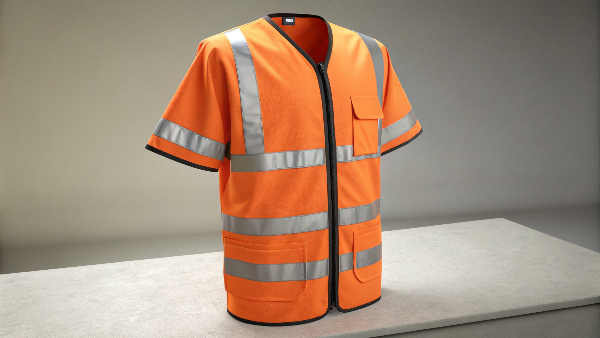
A Class 3 safety vest provides the maximum level of visibility according to standards like ANSI/ISEA 107 (USA) or CSA Z96 (Canada). This highest class is intended for workers in the riskiest environments. These environments often involve high-speed traffic (e.g., >50 mph / 80 km/h), complex visual backgrounds, or situations where workers need to be conspicuous through a full range of body motions at a minimum of 1,280 feet (390 m). To achieve Class 3, a vest must have a larger area of both fluorescent background material and retroreflective tape compared to Class 1 or Class 2 garments. Crucially, Class 3 garments under ANSI/ISEA 107 must have sleeves with retroreflective material. This ensures 360-degree visibility and helps define the human form better, especially at a distance or in poor weather. At Vissafety, we manufacture a wide range of Class 3 vests and jackets. We can even customize them with FR properties if the job site has both high traffic and fire hazards. For clients like Danny, whose customers work on major infrastructure projects, providing compliant Class 3 apparel is non-negotiable for worker safety.
| ANSI/ISEA 107 Class | Min. Background Material (sq. in.) | Min. Retroreflective Material (sq. in.) | Sleeve Requirement for Garments |
|---|---|---|---|
| Class 1 | 217 | 155 (or 107 for Type O) | No |
| Class 2 | 775 (Type R & P), 540 (Type O) | 201 | No |
| Class 3 | 1240 (Type R & P) | 310 | Yes (with retroreflective trim) |
What is the ANSI standard for safety vests?
US worksites demand ANSI compliance. Understanding this standard is vital. Non-compliant vests are a serious liability for any business.
The ANSI/ISEA 107 standard is the American National Standard for High-Visibility Safety Apparel. It classifies garments into types and performance classes based on visibility requirements for different risk levels.
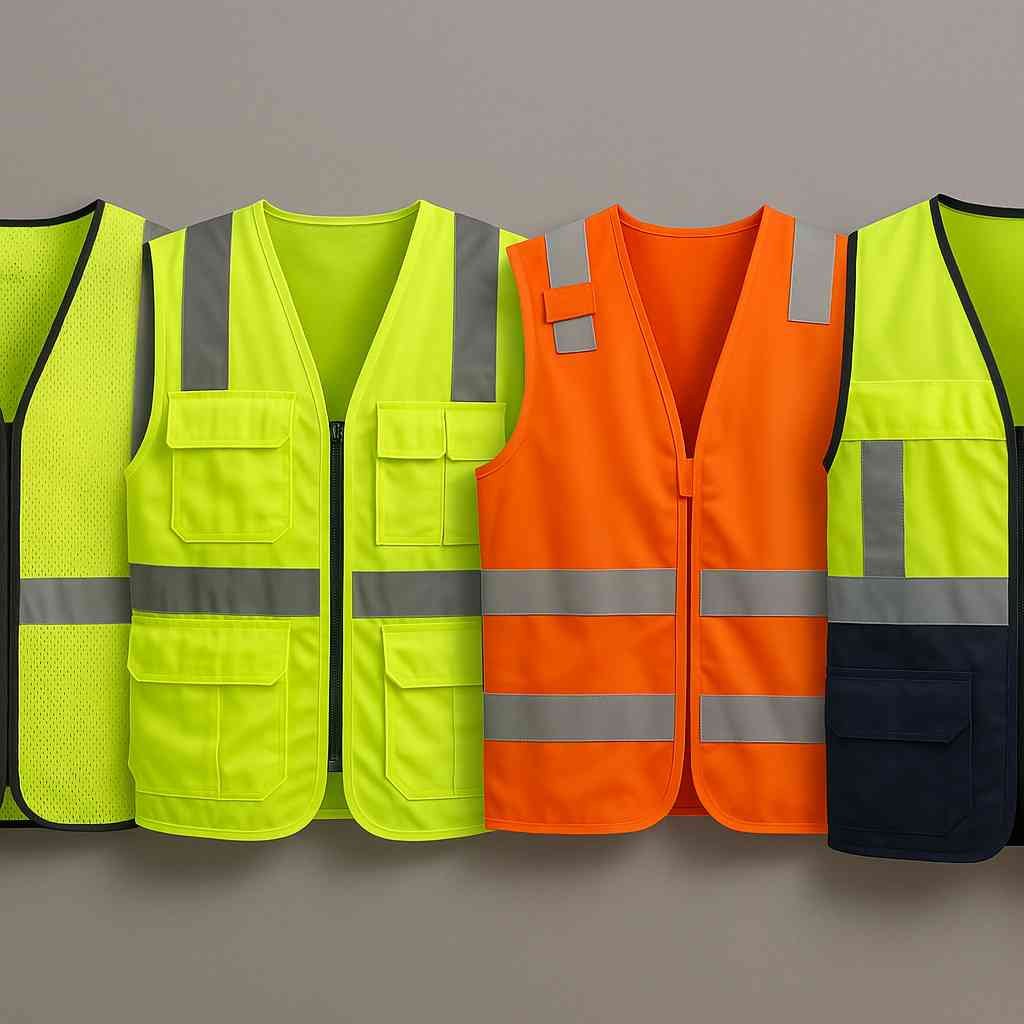
The ANSI/ISEA 107 standard is the go-to document in the United States for specifying high-visibility safety apparel (HVSA). Its full title is "American National Standard for High-Visibility Safety Apparel and Accessories." This standard outlines requirements for the design, performance (color, retroreflectivity, material amounts), and care labeling of HVSA. It categorizes garments into "Types" based on the work environment: Type O (Off-Road), Type R (Roadway and Temporary Traffic Control), and Type P (Public Safety Activities). Within these types, there are Performance Classes (1, 2, and 3). Class 1 is for low-risk environments, Class 2 for moderate risk, and Class 3 for high risk, with increasing amounts of high-visibility materials required for each class. Importantly, Section 10.5 of ANSI/ISEA 107 addresses optional FR characteristics. If a vest is claimed to be FR, it must pass ASTM D6413 vertical flame test. As a manufacturer supplying clients like Danny Cheng who distribute in North America, Vissafety ensures our relevant products are designed and tested to meet ANSI/ISEA 107, providing reliable, compliant PPE.
What are the different grades of safety vests?
"Grades" of vests can be confusing. Are they classes, types, or something else? Clarity ensures correct selection for safety.
"Grades" isn't a formal term in standards like ANSI or CSA. Instead, vests are defined by "Classes" (e.g., Class 1, 2, 3) and "Types" (e.g., Type O, R, P). These specify visibility levels.
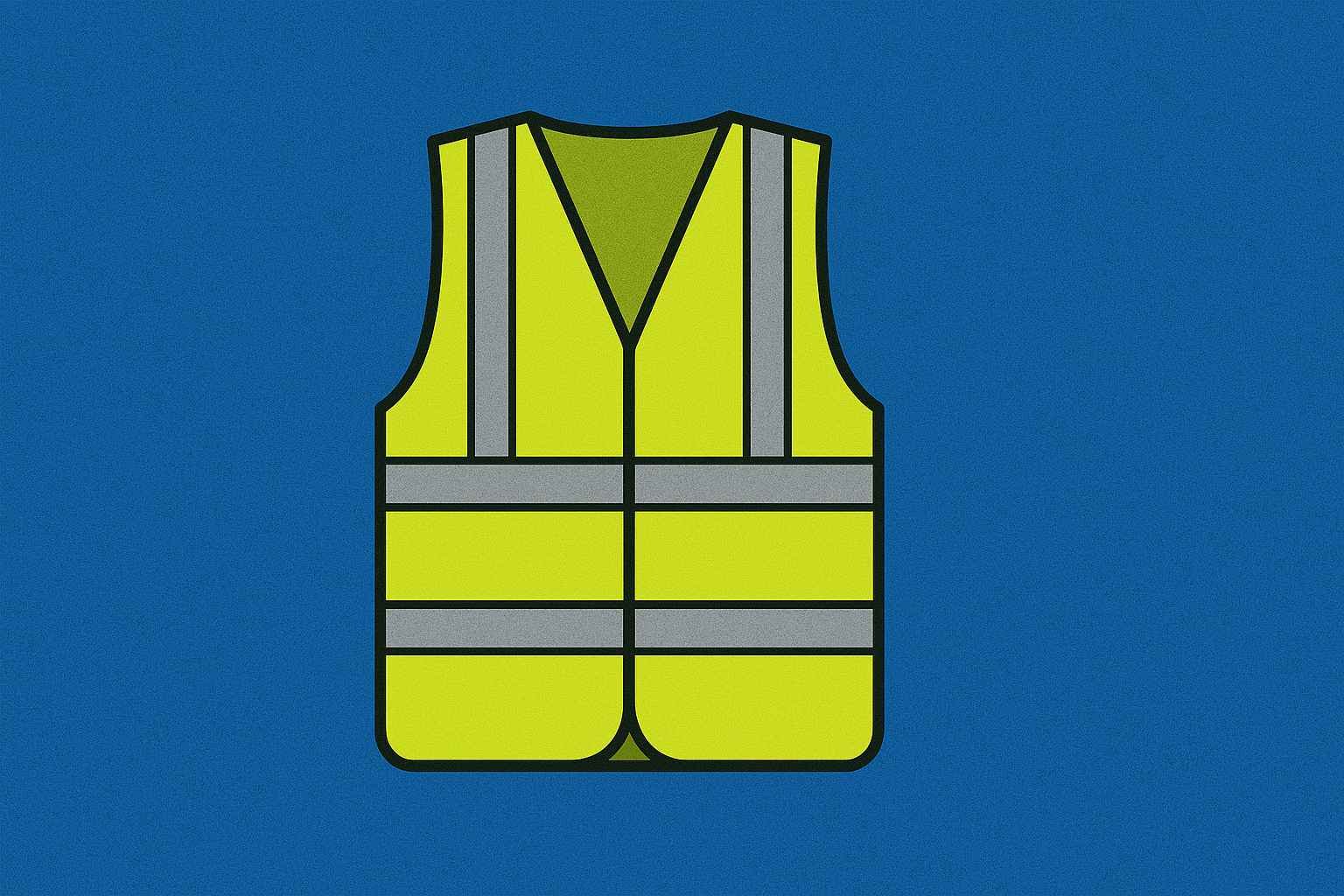
When people talk about "grades" of safety vests, they usually aren't referring to an official term from standards like ANSI/ISEA 107 or CSA Z96. These standards use specific terms like "Performance Class" (e.g., Class 1, 2, or 3) to define the amount of visible materials and thus the level of visibility. They also use "Type" (e.g., Type O for Off-Road, Type R for Roadway, Type P for Public Safety under ANSI) to indicate the intended work environment. So, instead of "grades," we focus on these official classifications. The term "grade" might be used informally to describe the overall quality of construction, the number of features (like pockets or radio loops), or specialized properties like flame resistance or arc rating. For instance, a basic mesh Class 2 vest might be seen as a different "grade" than a solid-front Class 2 vest with multiple pockets, an ID holder, and FR treatment. At Vissafety, we help our clients choose the correct Class and Type for their specific needs. Then, we can customize the vest with various features and materials, which might informally translate to different "grades" based on functionality and price point.
What are the rules for safety vests?
Rules for safety vests seem endless. Who sets them and why? Following them is absolutely key to safety and legality on any job.
Rules for safety vests are set by occupational safety bodies (like OSHA in the US) and standards organizations (ANSI, CSA, ISO). They mandate when and what type of vest is needed based on risk.

The "rules" for wearing safety vests primarily come from occupational health and safety regulations and consensus standards. In the U.S., the Occupational Safety and Health Administration (OSHA) requires employers to protect their workers from recognized hazards. While OSHA doesn't have one single rule that says "you must wear a hi-vis vest here," its General Duty Clause requires employers to provide a workplace free from serious recognized hazards. For visibility, OSHA often refers to standards like ANSI/ISEA 107. The Federal Highway Administration (FHWA) has specific rules for workers on federal-aid highways, mandating ANSI/ISEA 107 Class 2 or 3 apparel. Similar regulatory bodies exist in other countries, often referencing CSA Z96 in Canada or EN ISO 20471 in Europe. The core rule is that a risk assessment must be done. If that assessment shows a risk from moving traffic, low light, or other visibility hazards, then appropriate hi-vis apparel is required. If there's a fire hazard, FR-rated apparel is needed. I often tell clients, like Danny, that understanding the 'why' behind the rules – worker safety – makes compliance much easier. We at Vissafety help by providing garments that meet these various global and regional standards.
Conclusion
Choosing the right hi-vis vest, considering flammability and standards, is vital. We ensure your team's safety and compliance with quality gear.
-
Explore this link to understand NFPA 701, a key standard for assessing flammability in materials, crucial for safety in fire-prone environments. ↩
-
Learn about ASTM D6413, a vital standard for fire-resistant clothing, ensuring safety and compliance in hazardous work environments. ↩
-
Discover insights on workplace fire risks and effective mitigation strategies to enhance safety and protect employees. ↩
-
Discover the potential dangers of synthetic materials in safety gear and how to choose safer alternatives. ↩
-
Understanding FR vests is crucial for safety in hazardous environments. Explore this link to learn about their materials and effectiveness. ↩
-
Learn about ANSI Class 3 visibility standards to ensure maximum safety for workers in high-risk environments. ↩
-
Explore this link to understand the detailed requirements of CSA Z96, ensuring compliance and safety in your workplace. ↩
-
Discover the critical role of high-visibility safety apparel in protecting workers in hazardous environments. ↩
-
Learn about the significance of flammability ratings to make informed safety choices for your work environment. ↩

